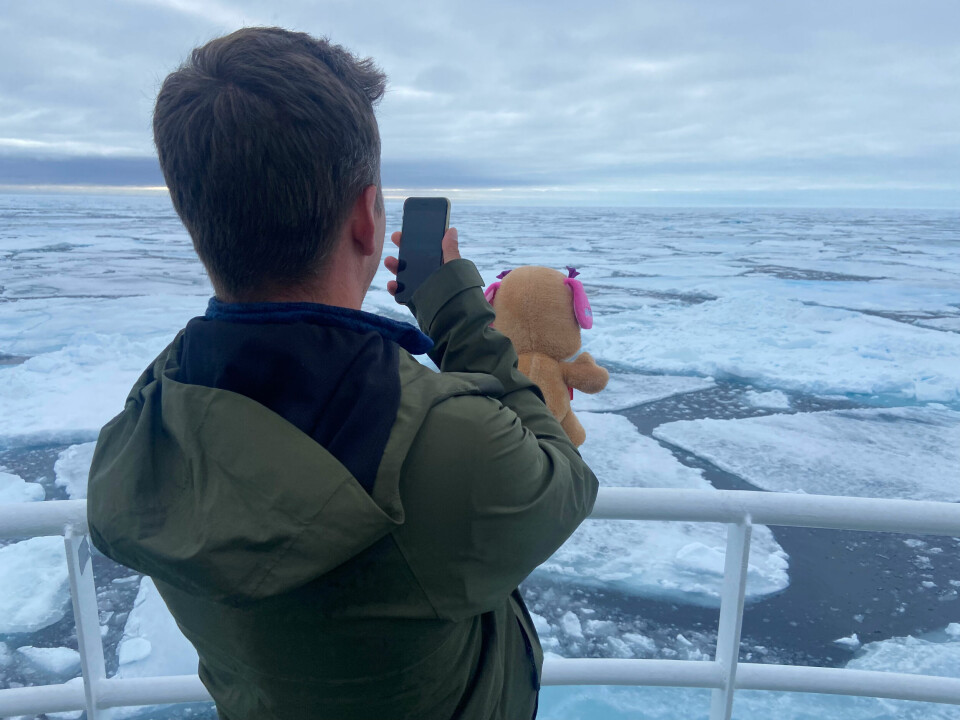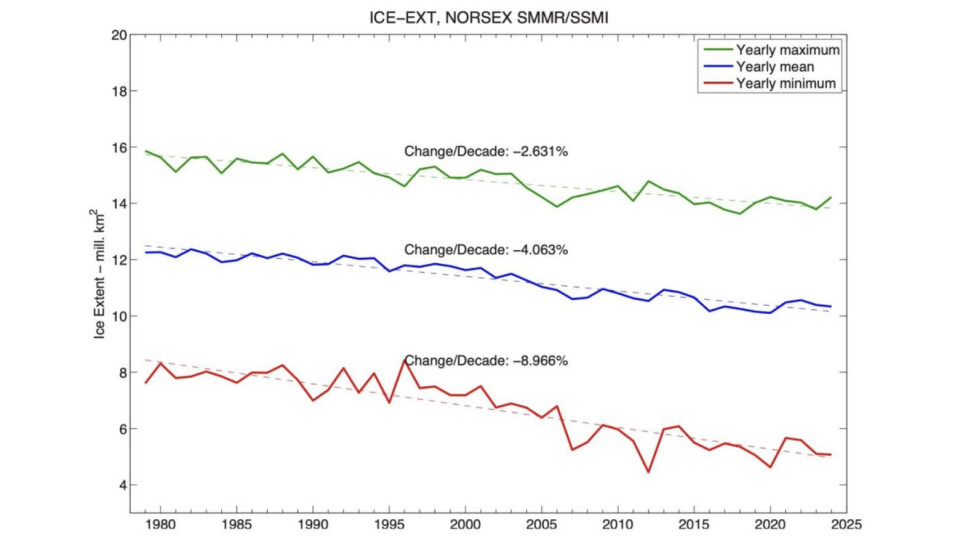OPINION

Arctic sea ice: Uncertainty what will happened in the future
The sea ice in the Arctic Ocean is an important climate indikator, in particular the summer ice. The September sea ice extent (SIE) has decreased about 40% since 1979 based on reliable US satellite data, see figure below which show the average monthly SIE for; minimum, September, the maximum, March and the annual SIE.
The reason for the decrease of the SIE is primarily the increase of the CO2 concentration in the atmosphere which in September 1979 was 333 parts per million (ppm) to 422 ppm in 2024, observed from Mauna Loa, Hawaii. This increase has also caused a significant warmer Arctic region than the average global warming.
I have published in 2023 that the correlation between the SIE and the CO2 concentration in the atmosphere in the period 1979-2022 for September showed that 80% of the decrease of SIE could be explained by the increase of the CO2 in the atmosphere, the remaining by natural variability. However, there is still large uncertainties on what will happen with the summer ice in this century. Most of the global climate modells project that the September SIE will be ice free in this century. A recent new study even conclude that the first ice free day in September could happened before 2030.
As mention above I have correlated the SIE with the CO2 concentration in the atmosphere and I have used this relationship to project the SIE for September 2030 under the assumption that the yearly increase of CO2 in September is 2,5 ppm, which has been the increase over the last few years. My projection for September SIE in 2030 is about 4 million squared kilometer, which is in large contract both to the global climate models and the result that the first ice free day can occur before 2030.
I do not agree that the Arctic Ocean will be ice free in this century. In 2023, I suggested a new hypothesis that the summer ice will not disappear if the planned reduction of the CO2 will occur in the coming years. There will be no tipping point. Based on the correlation between the SIE and the CO2 as mention above, I have calculated that the Arctic Ocean only could be ice free in September if the CO2 concentration in the atmosphere reach 573 ppm: That is not likely to happened and is far above the Paris Agreement of 450 ppm by 2060. Even if the Paris Agreement will not be totally achieved, a reduction of CO2 concentration to the atmosphere will take place in the coming years and my «hypothesis of no tipping point» for the summer ice will perhaps be correct.
Only time will show.

















